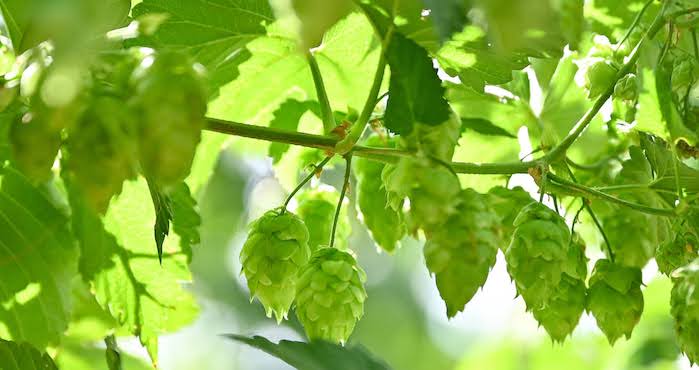Hop Science Newsletter (October 2017)
In this issue: bitter acids, hop creep, and the possibility of a dry-hopped alcohol-free beer.

LOOKING FOR THE WHOLE RANGE OF BITTER ACIDS?
The common bitter acids in beer are usually analyzed using different HPLC industry methods. In Case you are in the
possession of an underused LC-Q-ToF-MS why not try a HRMS (High Resolution Mass Spectometry) method? HRMS is a promising technique that enables outstanding performance in substance identification. With this method the simultaneous quantification of 33 bitter acids (from the different iso-alpha acids to humulinones and xanthohumol, etc.) is possible with an easy sample preparation and a short analysis run time. Interested?1
DO YOU KNOW THE HOP CREEP?
Most brewers have seen this: The after fermentation of dry hopped beers in the presence of yeast (see my last Newsletter’s summary of the presentation of A. Baillo). This phenomenon is not well understood but documented in old British literature; the last reference goes back to 1941 where maltase activity was evidenced in dry hopped casked ales. These U.S. researchers discovered that the production of fermentable sugars, glucose and maltose in dry hopped beer in the presence of yeast correlates with increased temperature and dry hop exposure time. Enzyme activities were found for amyloglucosidase and alpha and beta amylases. Despite the low enzyme activities, significant changes in residual extract, ABV and CO2 production can occur in dry hopped beers. How should we be surprised? Everybody likes sweet stuff!2
HOPS – MIGHT AS WELL TELL ME YOUR NAME, AS I WILL FIND IT OUT ANYWAY!
Finding an easy analysis to identify a hop variety or even the growing region has proven to be challenging up to now.
This U.S. research team is currently developing a GCSulfur-Chemiluminescence method in combination with a Gertl Twister™ for sample preparation to determine the hop variety and also the growing region. After establishing a data library, the variety matching was proven to work. For the regional matching, the proof of concept is viable but further work needs to be carried out.3
HOW ABOUT PRODUCING A DRY HOPPED ALCOHOL FREE BEER?
Alcohol-free beer and functional drinks are two strongly growing markets within the beverage sector. The success of alcohol-free beer and functional drinks with relaxing, stress reducing properties might be largely based on their health-benefits. Additionally, exotic flavors along with a high product quality are also key value propositions of these products. In this study, the main potential health benefits of alcohol-free dry-hopped beer and dry-hopped relaxation drinks are reviewed and the main target consumer groups are described. I am in!…and would drink dry hopped beverages all day long. I have 3 kids! 4
REFERENCES:
1. Hildebrandt, J.: Dilute and Shoot -Comprehensive LC-Q-ToF-MS analysis of beer bitter acids, Poster 47
2. Kirkpatrick, K.: Investigating Enzymatic Power of hops, Poster 35
3. Foster, R.D.: Identification of Hop Varieties and Growing Region by Gas Chromatography-Sulfur
Chemiluminescence, Poster 37
4. Hagemann, M.: Chance for dry hopped non alcoholic beverages, Brewing Science 70 (July/August 2017), pp. 118-123 http://www.brewingscience.de
